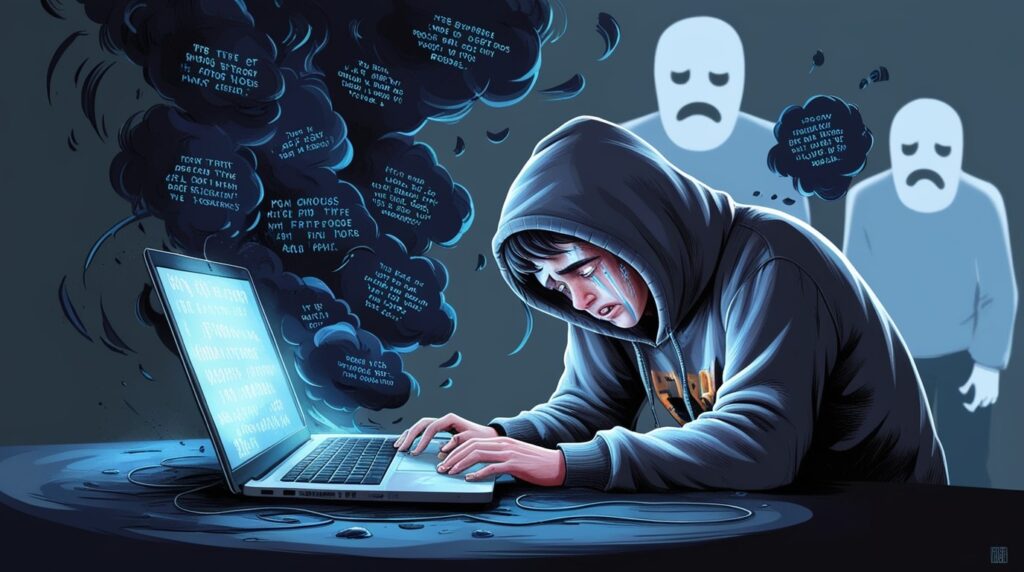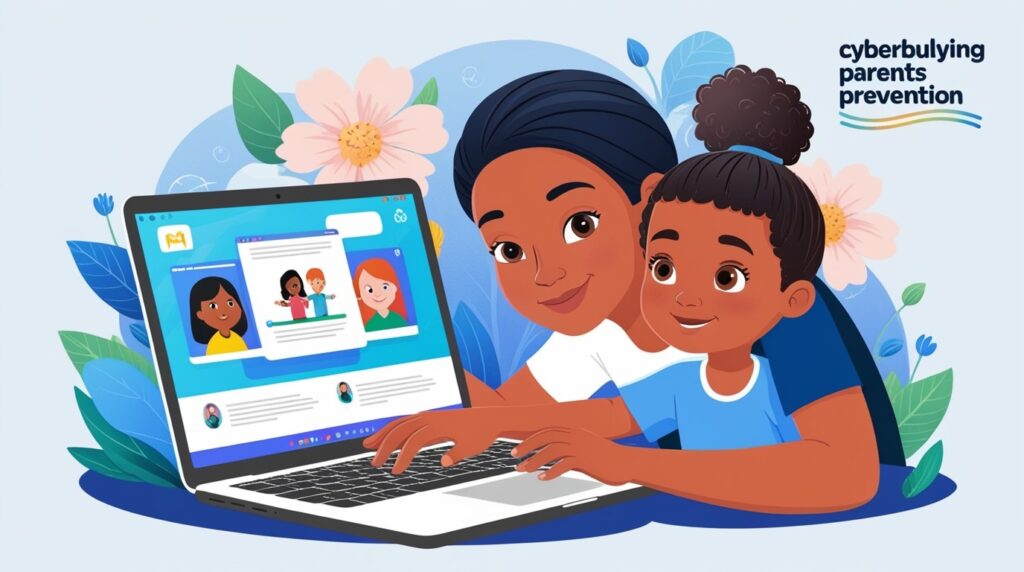Cyberbullying Prevention: Essential Strategies for Parents and Kids in 2025
Hey there, parents! Ever feel like your kids are glued to their screens more than interacting with actual people? You’re definitely not alone. Just last week, a friend shared how her 10-year-old tried to sneak his tablet into the bathroom. Classic kid move, right? If you’re struggling to stay on top of your child’s screen time, it might be time for an important conversation about cyberbullying.
In today’s world, kids are facing more digital challenges than ever before, and cyberbullying is at the top of the list. Understanding how to prevent and handle it is key to keeping your child safe. So let’s dive into the best cyberbullying prevention strategies for parents and kids in 2025!

What is Cyberbullying, and Why Should We Care?
Understanding Cyberbullying in Today’s Digital Age
Cyberbullying is when someone uses digital platforms like social media, messaging apps, or online games to harass or harm others. Unlike traditional bullying, cyberbullying never takes a break. It happens 24/7, which means the victim can’t easily escape it. What’s worse, it’s all online, so your child doesn’t even have to leave the house to feel the emotional effects.
A few years ago, we mostly associated cyberbullying with social media, but now it can happen just as easily in messaging apps, video games, or even email. Whether it’s name-calling, spreading rumors, or sending hurtful messages, the impact of cyberbullying is significant and far-reaching.

Parent monitoring child to prevent cyberbully
The Rising Impact of Cyberbullying: Shocking Stats
It’s crucial to understand just how widespread cyberbullying is in order to take the cyberbullying prevention seriously. Here are some eye-opening stats:
Dr. Emma Thompson, a well-known researcher, explains, “The psychological impact of cyberbullying can be as harmful as, or even worse than, traditional bullying due to its constant nature.” It’s not just an annoying phase—it can lead to depression, anxiety, and serious declines in academic performance. Addressing it early is essential to protecting your child’s mental well-being.
Cyberbullying is not just a “phase” or something that kids can simply “get over.” The long-term emotional toll can be devastating, making it critical to address these issues head-on.
Why Cyberbullying Preventing Is Cricial
Cyberbullying has real-world consequences that extend beyond the screen:
Mental Health Struggles
The emotional toll of cyberbullying is real. Kids who are targeted often face heightened levels of anxiety and depression. Since cyberbullying never stops, it can feel overwhelming for a child who doesn’t have a chance to recover from it.
Academic Decline
If your child is being cyberbullied, it can significantly affect their school performance. Kids often find it hard to concentrate on their studies or homework, and it’s common for grades to drop when they’re worried about online harassment.
Social Isolation
Victims of cyberbullying may pull away from both online and offline interactions. They may feel embarrassed or ashamed, making them withdraw from social situations, and increasing feelings of loneliness and isolation.
Family Tension
The emotional toll of cyberbullying often creates a ripple effect of stress at home. As parents work to understand their child’s experience—while siblings unknowingly amplify tension—practicing Cyberbullying Prevention through calm, open dialogue becomes essential. These strategies help transform distress into support:
Cyberbullying Prevention Toolkit for Parents and Kids
Now that we understand the seriousness of cyberbullying, let’s look at some effective strategies for both parents and kids. These tools will help you build a healthy, safe digital environment for your family.
1. Keep Communication Open: Make It Easy to Talk
Creating a safe space for your child to share their online experiences is key to preventing cyberbullying. Here’s how you can make sure your child feels comfortable talking to you:

Building trust and connection—where open conversations strengthen family bonds every day
2. Teach Digital Etiquette and Responsibility
Teaching Digital Kindness and Respect
Instilling digital responsibility is crucial in helping your child avoid becoming part of the problem. Here’s how you can teach kindness and respect in the digital world:
Fun Activity: Play “Decode the Tone” with kids. Show them text messages and ask them to identify the tone. Sometimes, words come across differently than intended online, and helping kids understand this can prevent miscommunication.
For more on responsible online behaviour, check out our guide on Creating a Technology Contract with Your Teenager.
3. Strengthen Privacy and Security Skills
Cyberbullying Prevention starts with safeguarding personal information online. Equip your child with these essential strategies to stay safe and resilient in digital spaces:
Challenge: Have a family competition to create the strongest password. Make it fun by creating passwords that are complex but memorable (e.g., UnicornNinja7#).
Expert Tip: Cybersecurity expert John Smith suggests using a password manager for easy access to unique, secure passwords.
4. Promote Upstander Behavior: Empower Kids to Help Others
Encourage your child to stand up for their peers and create a supportive digital community:
Role-play scenario: Act out a situation where a peer is being cyberbullied and ask your child how they’d respond. This approach reinforces constructive ways to intervene.
Success Story: 14-year-old Alex started an “Internet Kindness Club” at his school after learning about upstander behaviour. The result? Incidents of reported cyberbullying dropped by 50%!

Encouraging kids to support their pairs
Want to learn more about empowering kids online? Check out our article on Balancing Online and Offline Activities for a Healthy Digital Life.
5. Set Clear Online Boundaries: Establish Family Rules
Creating guidelines for online behavior helps ensure that kids understand what’s acceptable and what’s not. Here’s how to set boundaries:
Family Project: Create a “Digital Family Agreement” together. Write down rules and display them in a common area for easy reference.
6. Build Self-Esteem Beyond the Screen
Helping your child develop self-esteem that isn’t dependent on social media is vital for their mental health:
Fun Idea: Dedicate one day a week to “No Phone Day” and engage in family activities like hiking, playing board games, or cooking together.
Know When to Seek Help
In some cases, cyberbullying may require professional help. Here’s when you should reach out for extra support:
Ongoing Cyberbullying Prevention Tips for Families
Preventing cyberbullying is an ongoing process. Here’s how to stay ahead:
1. Stay updated on new apps and platforms.
2. Model positive behavior online by engaging respectfully in digital spaces.
3. Celebrate kindness by acknowledging and praising positive online behavior.
4. Encourage regular breaks from screens with digital detox days.
5. Stay involved by knowing the apps and games your kids are using.
6. Encourage breaks: A digital detox every so often can help balance screen time and reset the mind.
7. Stay involved: Know the apps and games your kids use. It’s not about spying; it’s about being a supportive, engaged parent.
Conclusion: Creating a Positive Digital Culture Together
Cyberbullying prevention is about more than just protecting kids from harm—it’s about empowering them to make positive, kind choices online. By teaching empathy, building privacy awareness, and maintaining open lines of communication, we can help our kids safely navigate the digital world. Together, we can make the online space a positive, supportive place for everyone.
Ready to join the fight against cyberbullying? Let’s make 2025 a year of kindness, respect, and resilience online.

Creating a Positive Digital Culture Together
Want more ideas for positive online experiences? Check out our list of Top Educational YouTube Channels for Kids, or our article on Creating Tech-Free Zones in Your Home.

